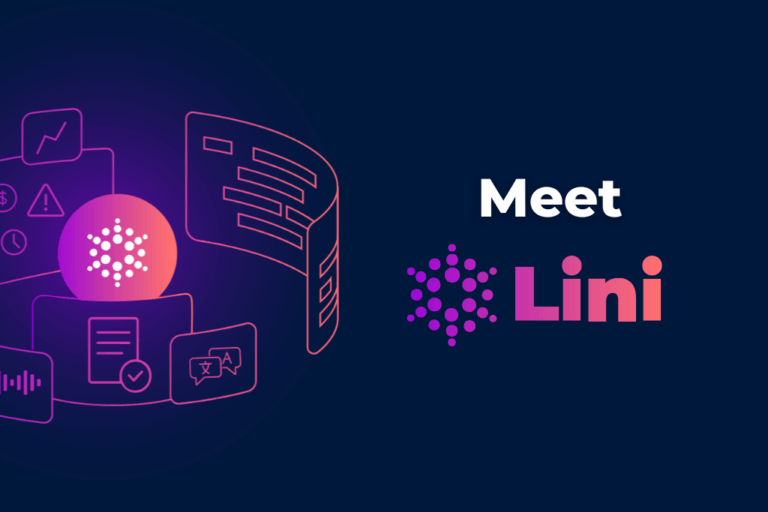There’s been a huge pressure to modernize legal teams, and this pressure comes with integrating AI to the picture. If you ask any General Counsel or in-house legal expert whether or not they’ve integrated AI powered tools in their stack in recent years they’ll most probably answer yes. The thing is, is AI for legal teams being used how it should? To go even further, what does it mean to properly leverage AI as a legal professional?
The AI Hype vs. Operational Impact
Legal teams aren’t new to digital transformation, but AI is different. While many departments have experimented with AI-powered tools, how many have properly scaled them across workflows? How many are using AI powered LegalTech in a measurable way?
There’s a difference between having the latest shiny features and actual functionality. With AI, it can be easy to fall into the “trend” aspect of new technology. For this reason, legal teams must ensure they’re responding to the right needs and answering the right questions. Furthermore, in order to succeed with AI powered LegalTech, legal professionals should also try to see the bigger picture – how is this going to impact other departments we work with? How long until everyone is fully onboarded on the tool? Who will keep the tool alive once we get it?
Insight: According to a 2024 EY Law survey, over 70% of corporate legal teams say they plan to increase AI use. Yet only 15% report current “high impact” usage.
The Smart Approach to AI LegalTech
Legal teams have work pains just like any other department, so who’s a better candidate than themselves to define priorities and processes eating up their time. Although choosing a LegalTech tool, as for instance a CLM or Board Management software may seem daunting, it can be easier than some think. It’s a matter of asking the right questions, to right team members, and establishing priorities.
So the next time you’re looking at a tool, instead of thinking “wow this feature is great”, think also “will this feature really help us today, or could we keep that for the future?”. Here are some common questions we’ve noticed legal teams ask themselves:
- What manual processes eat up our time?
- Where are we most exposed to legal or compliance risk?
- What decisions require faster, more accurate information?
Remember, the best AI deployments in legal don’t replace lawyers — they refocus them on higher-value tasks. And that only works when tools are tightly aligned with business needs.
Use Cases and Features That Actually Deliver Value
Moving over the hype to practicality, we’ve gathered a few common use cases and its associated features that have proven useful and impactful. AI and governance are a great match, let’s find out more.
1. Contract Management
Contract management and reviewing are some of the highest time consuming tasks for legal teams. The workload is even worse for companies with multiple entities in different jurisdictions and many different suppliers. In this context, it’s essential to find smart ways to gain time and efficiency. An AI powered Contract Lifecycle Management solution can do just that.
Use Case: Renewable Energy Procurement
A European renewable energy provider spends too much time finding gaps in their sustainability clauses, which are essential to many of their contracts seen the nature of the energy industry. Missing those gaps not only takes time but can have big compliance and financial consequences. Which AI features are more than the hype in this case?
Instead of manually scanning contracts for liability risks or compliance gaps, AI surfaces red-flag clauses instantly. Legal stays in control but spends less time on admin, and more time advising.
2. Entity Management
International companies—or even those with just more than five entities—need a robust entity management solution. Manual methods like spreadsheets or siloed systems increase the risk of errors, delays, and compliance breaches. Tracking ownership structures, board compositions, changes in ownership, documentation… it can all become chaotic when information isn’t centralized and international teams lack shared visibility on what matters.
An AI-powered Legal Entity Management (LEM) solution helps centralize and automate these workflows, enabling legal teams to stay ahead of regulatory obligations and investor reporting.
Use Case: Multi-Jurisdictional Portfolio Oversight
In the private equity world, firms often hold significant portfolios. Take, for example, a mid-sized PE firm with 40 portfolio companies across Europe and North America. Managing that many entities can quickly become a burden, chasing filing deadlines, handling delayed or uncommunicated cap table updates… it all adds up. The result? A frictional environment for both regulators and partners. What are some AI-driven features that can turn things around?
With the right features, an Entity Management solution can cut down on manual maintenance and help your legal team focus on what truly matters. Private Equities with big portfolios can get real-time visibility, meet all compliance deadlines, while improving reporting accuracy for internal and external stakeholders.
3. Matters
Matter management is another big chunk of legal work, and its investigative and time-sensitive nature makes it particularly challenging without the appropriate tools. When handling cases, litigations, or disputes, some of the common efficiency problems include finding documents, scattered information across different systems, and poor communication between interested parties, just to name a few. The last thing any legal professional wants is to lose a case because of a missing document or a misunderstanding with other parties.
An AI-enhanced Matter Management solution brings visibility and structure to these complex workflows, enabling legal teams to respond faster and collaborate more effectively.
Use Case: Regulatory Inspection Response
In the pharmaceutical industry, companies are prone to receive surprise inspection requests from different health authorities. More so if said company operates across multiple jurisdictions. When such inspections arrive, legal teams have to be reactive and compile sensitive documentation such as clinical trial correspondance and prior compliance reports. Which AI features for matter management can help?
Legal departments can pull records faster and stay within audit timing requirements. Furthermore, coordination with other departments and external parties is facilitated, ultimately avoiding penalties and demonstrating governance maturity.
Planning for the Long-term
AI isn’t the answer to all problems, and legal teams don’t need to chase every innovation. But they do need to ask tough questions about how they work today, and what’s holding them back.
By focusing on real pain points, leveraging AI in governance-specific contexts, and prioritizing secure and compliant solutions, legal departments can unlock value that goes far beyond
cost-cutting.
It’s not about having the most tools, it’s about having the right ones, with the right guardrails, delivering the right outcomes.
DiliTrust brings practical AI to the heart of legal operations. Whether you’re streamlining contracts, managing entities, or centralizing legal matters, our secure governance suite is built for legal complexity.


